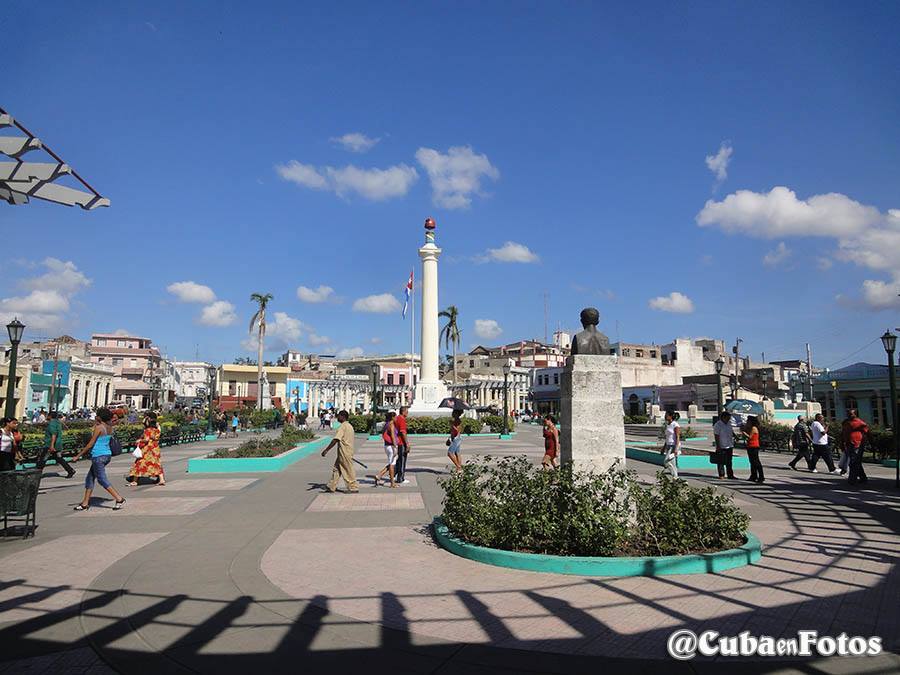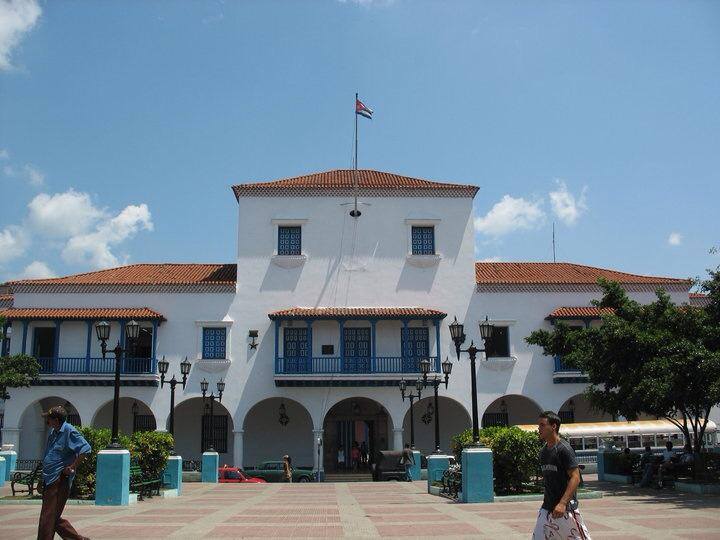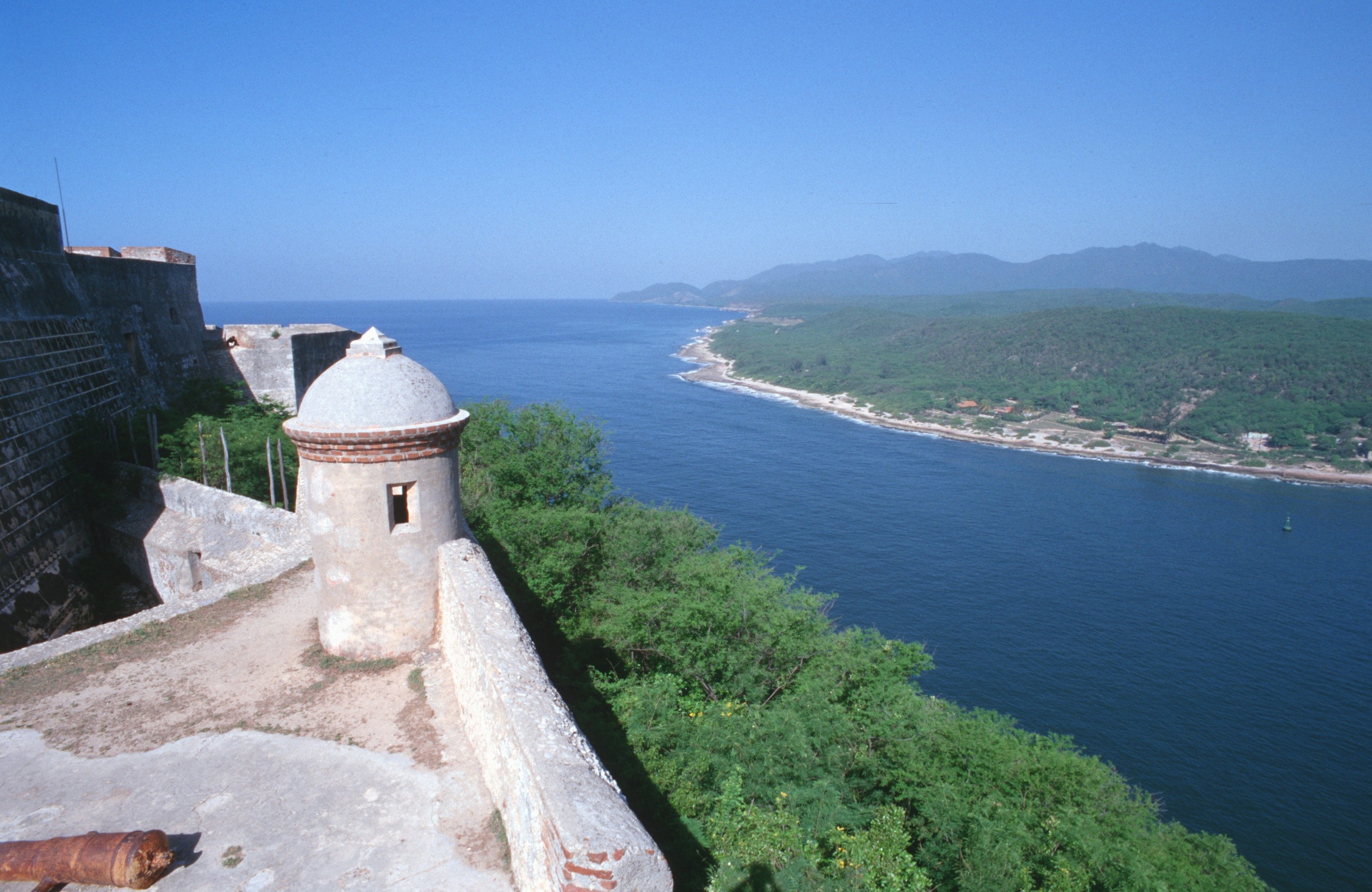Santiago de Cuba is the second largest city of Cuba and capital city of Santiago de Cuba Province in the south – eastern area of the island , some 540 miles ( 870 km ) south -east of the Cuban capital city of Havana .
Santiago de Cuba is located in the southeast of the island at coordinates 20 ° 01’17 .42 ” N 75 ° 49’45 .75″ O , some 540 miles ( 870 km ) of the capital Havana . It features a bay connected to the Caribbean Sea and is a major port . The municipality of Santiago de Cuba , where is its principal city, is The most populated of Cuba .
The city has been growing at the bottom of the bay and is surrounded on land by the Sierra Maestra. This Determines the hot and humid climate of the place , the landscapes features rich composition of urban elements , natural and marine at the same time . It has an irregular offset , que Contributed to the development of an urban setting where the avenues and streets are steep or descend .
In the Census of 2004 the city of Santiago de Cuba had a population of about 494.337 people.
The municipality extends over 1,023.8 square kilometers ( 395.3 sq mi ) , and contains the communities of El Caney , Guilera , Antonio Maceo , Bravo , Castillo Duany , Leyte Vidal and Moncada .
History
Santiago de Cuba was founded by Spanish conquistador Diego Velázquez de Cuéllar on June 28 , 1514. In 1516 the settlement was destroyed by fire , and was rebuilt time immediately . This was the starting point of the expeditions led by Juan de Grijalva and Hernán Cortés to the coasts of Mexico in 1518 , and in 1538 by Hernando de Soto ‘s expedition to Florida . The first cathedral was built in the city in 1528. From 1522 until 1589 Santiago was the capital city of the Spanish colony of Cuba .
It was Also the location where Spanish troops faced Their main defeat at San Juan Hill on July 1, 1898 , During the Spanish – American War. After capturing the surrounding hills, General William Rufus Shafter laid siege to the city . [5 ] Spain later surrendered to the United States after Admiral William T. Sampson destroyed the Spanish Atlantic fleet just outside Santiago’s harbor on July 3, 1898 .
Cuban poet , writer , and national hero , José Martí , is buried in Cementerio Santa Iphigenia .
Santiago de Cuba was the hometown of poet José María Heredia. It houses a museum EXTENSIVE That displays the art collection of the Bacardi family.
Land of Music
Santiago de Cuba is well Known for its culture life . Some of Cuba ‘s most famous musicians , treats including Compay Segundo, Ibrahim Ferrer and Eliades Ochoa and trova composer Nico Saquito ( Benito Antonio Fernández Ortiz ) were born in the city or in one of the villages surrounding it . They have Contributed to the typical , country – like music of the city .
Furthermore , Santiago de Cuba is well Known for its traditional dances , Most Notably are , from salsa Which has been derived , and guaguancó , que is Accompanied by percussion music only . The city is Also well Known for its Carnival , que strangely enough is Celebrated in July . During Carnival , traditional conga music is played in the streets on a traditional pentatonic trumpet , called the Chinese trumpet .
A relativamente high number of residents of the city Adhere to Afro -Cuban religions , Most Notably Santeria . The city hosts an important community of descendants from Haitian immigrants from the 19th century. Some aspects of the religious ” Vodun ” heritage of the city can be traced back to this community .
In the city there are multiple architectural styles , from Baroque to neoclassical . Of special interest are the wooded parks , the steep streets , colonial buildings with huge windows and crowded balconies . Preserved historical treasures include the first home in the Americas , the first cathedral in Cuba , the first copper mine opened in the Americas and the first Cuban museum .
Santiago is served by Antonio Maceo Airport. Cubana de Aviación connects the City with Havana , Montréal , Madrid and Paris- Orly , other airlines connect the city With The rest of the Caribbean and North America .
The public transit in the city , like Havana , is Carried out by two divisions , Omnibus Metropolitans (OM ) and Metrobus . The Metrobus serves the inner -city urban area , with a maximum distance of 20 km ( 12 mi ) . Omnibus Metropolitans (OM ) connects the adjacent towns and Municipalities in the metropolitan area with the city center, with a maximum distance of 40 km ( 25 mi) .
Ferrocarriles de Cuba railways and ASTRO inter -city buses connect the City with Havana’s Central Railway Station and with most other main cities of Cuba .
Sources: Wiki/InternetPhotos/www.TheCubanHistory.com
SANTIAGO DE CUBA: beautiful and Historical City
The Cuban History, Arnoldo Varona, Editor
SANTIAGO DE CUBA: DE LAS MAS BELLAS E HISTORICAS
Santiago de Cuba is the second largest city of Cuba and capital city of Santiago de Cuba Province in the south-eastern area of the island, some 540 miles (870 km) south-east of the Cuban capital of Havana.
Santiago de Cuba is located in the southeast of the island at coordinates 20 ° 01’17 .42 “N 75 ° 49’45 .75” O, some 540 miles (870 km) of the capital, Havana. It features a bay connected to the Caribbean Sea and is a major port. The municipality of Santiago de Cuba, where is its capital city, is the most populated of Cuba.
The city has been growing at the bottom of the bay and is surrounded on land by the Sierra Maestra. This determines the hot and humid climate of the place, the landscapes features rich composition of urban elements, natural and marine at the same time. It has an irregular offset, which contributed to the development of an urban setting where the avenues and streets are steep or descend.
In the Census of 2004 the city of Santiago de Cuba had a population of about 494,337 people.
The municipality extends over 1,023.8 square kilometers (395.3 sq mi), and contains the communities of El Caney, Guilera, Antonio Maceo, Bravo, Castillo Duany, Leyte Vidal and Moncada.
History
Santiago de Cuba was founded by Spanish conquistador Diego Velázquez de Cuéllar on June 28, 1514. In 1516 the settlement was destroyed by fire, and was immediately rebuilt. This was the starting point of the expeditions led by Juan de Grijalba and Hernán Cortés to the coasts of Mexico in 1518, and in 1538 by Hernando de Soto’s expedition to Florida. The first cathedral was built in the city in 1528. From 1522 until 1589 Santiago was the capital of the Spanish colony of Cuba.
It was also the location where Spanish troops faced their main defeat at San Juan Hill on July 1, 1898, during the Spanish-American War. After capturing the surrounding hills, General William Rufus Shafter laid siege to the city.[5] Spain later surrendered to the United States after Admiral William T. Sampson destroyed the Spanish Atlantic fleet just outside Santiago’s harbor on July 3, 1898.
Cuban poet, writer, and national hero, José Martí, is buried in Cementerio Santa Efigenia.
Santiago de Cuba was the hometown of poet José María Heredia. It houses a museum that displays the extensive art collection of the Bacardí family.
Land of Music
Santiago de Cuba is well known for its cultural life. Some of Cuba’s most famous musicians, including Compay Segundo, Ibrahim Ferrer and Eliades Ochoa and trova composer Ñico Saquito (Benito Antonio Fernández Ortiz) were born in the city or in one of the villages surrounding it. They have contributed to the typical, country-like music of the city.
Furthermore, Santiago de Cuba is well known for its traditional dances, most notably son, from which salsa has been derived, and guaguancó, which is accompanied by percussion music only. The city is also well known for its Carnival, which is strangely enough celebrated in July. During Carnival, traditional conga music is played in the streets on a traditional pentatonic trumpet, called the trompeta china.
A relatively high number of residents of the city adhere to Afro-Cuban religions, most notably santería. The city hosts an important community of descendants from Haitian immigrants from the 19th century. Some aspects of the religious “vodún” heritage of the city can be traced back to this community.
In the city there are multiple architectural styles, from Baroque to neoclassical. Of special interest are the wooded parks, the steep streets, colonial buildings with huge windows and crowded balconies. Preserved historical treasures include the first home in the Americas, the first cathedral in Cuba, the first copper mine opened in the Americas and the first Cuban museum.
Santiago is served by Antonio Maceo Airport. Cubana de Aviación connects the city with Havana, Montréal, Madrid and Paris-Orly, other airlines connect the city with the rest of the Caribbean and North America.
The public transit in the city, like Havana, is carried out by two divisions, Omnibus Metropolitanos (OM) and Metrobus. The Metrobus serves the inner-city urban area, with a maximum distance of 20 km (12 mi). Omnibus Metropolitanos (OM) connects the adjacent towns and municipalities in the metropolitan area with the city center, with a maximum distance of 40 km (25 mi).
Ferrocarriles de Cuba railways and ASTRO inter-city buses connect the city with Havana’s Central Railway Station and with most other main cities of Cuba.
Sources: Wiki/InternetPhotos/www.TheCubanHistory.com
SANTIAGO DE CUBA: beautiful and Historical City
The Cuban History, Arnoldo Varona, Editor



 © SANTIAGO DE CUBA: Beautiful and Historical City (Photos) * * SANTIAGO DE CUBA: De las más Bellas e Historicas Ciudades (Photos).
© SANTIAGO DE CUBA: Beautiful and Historical City (Photos) * * SANTIAGO DE CUBA: De las más Bellas e Historicas Ciudades (Photos).


